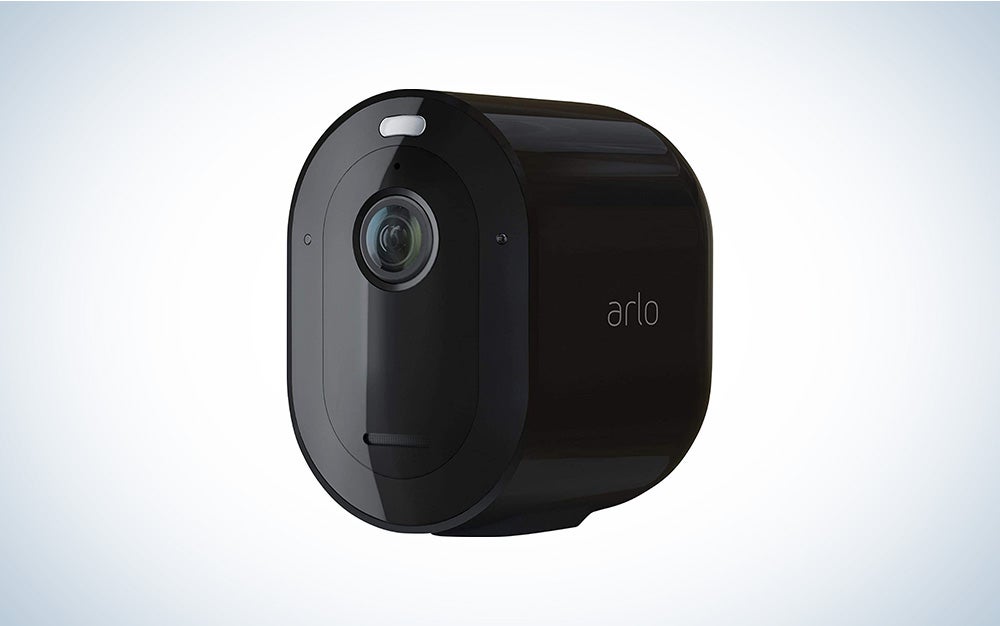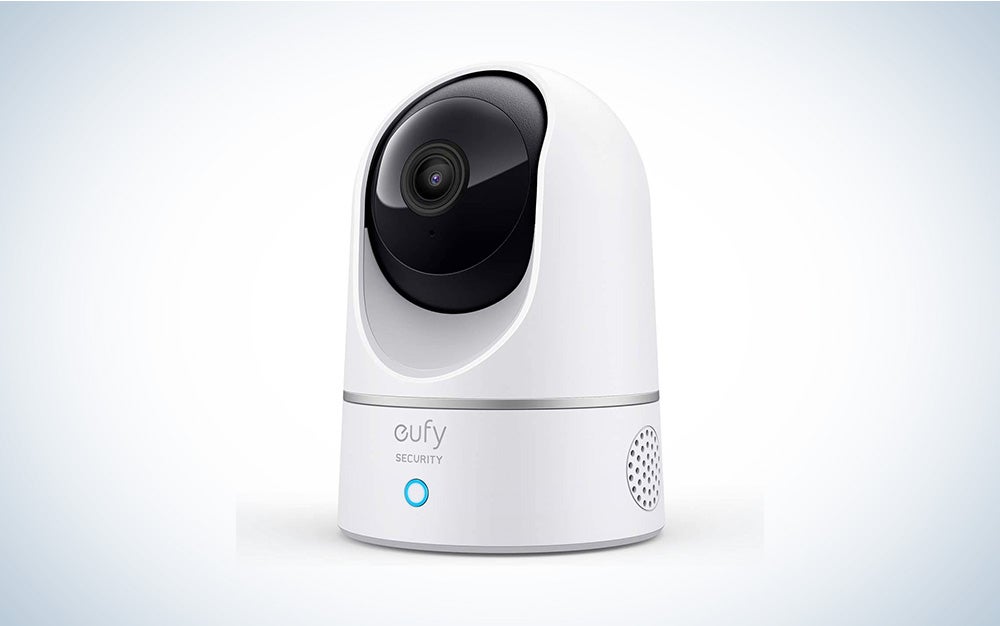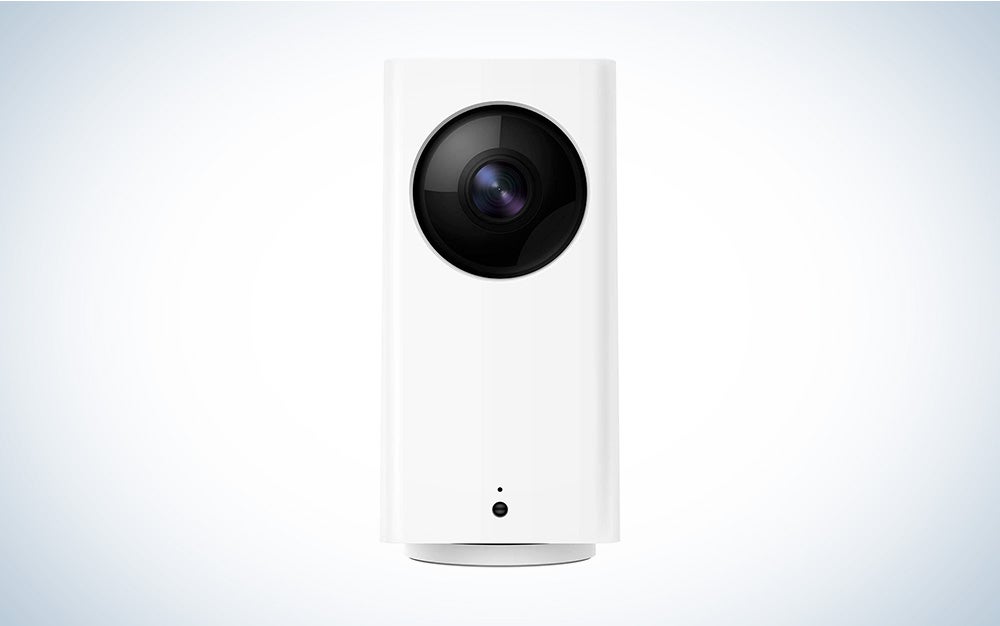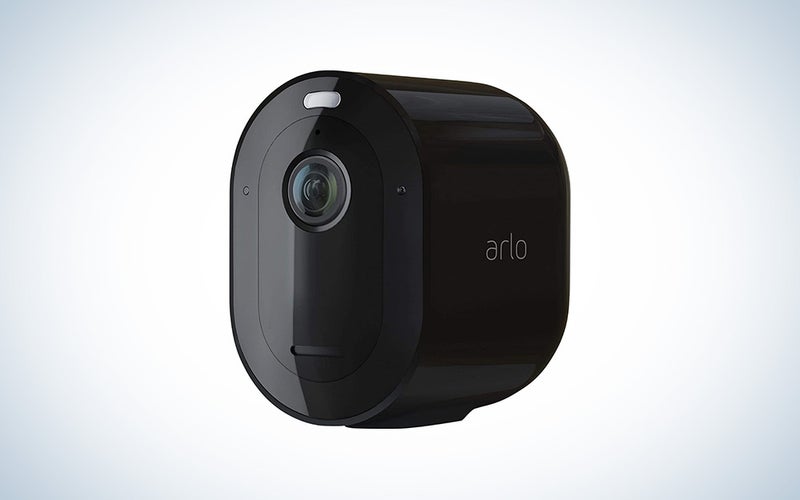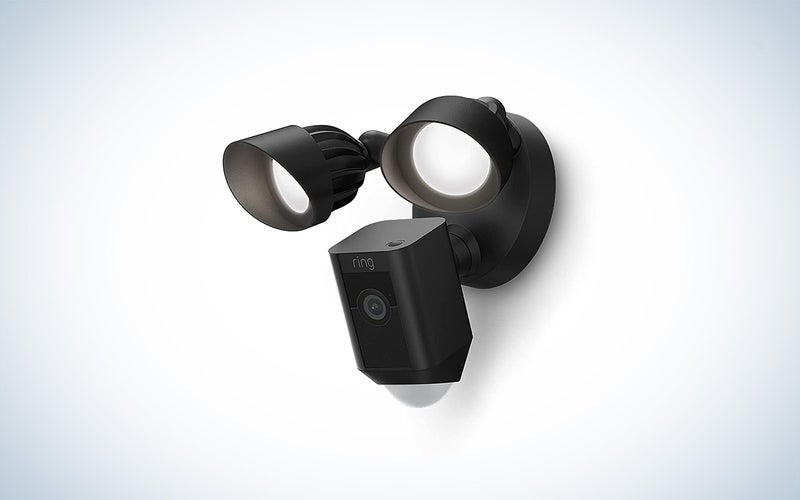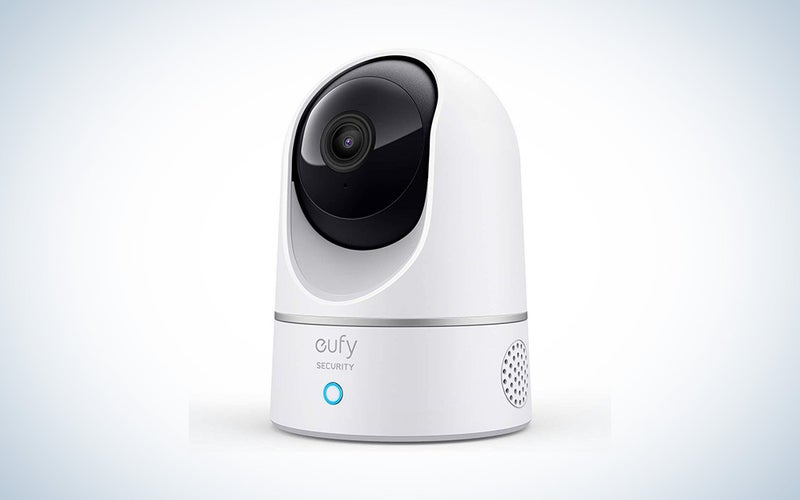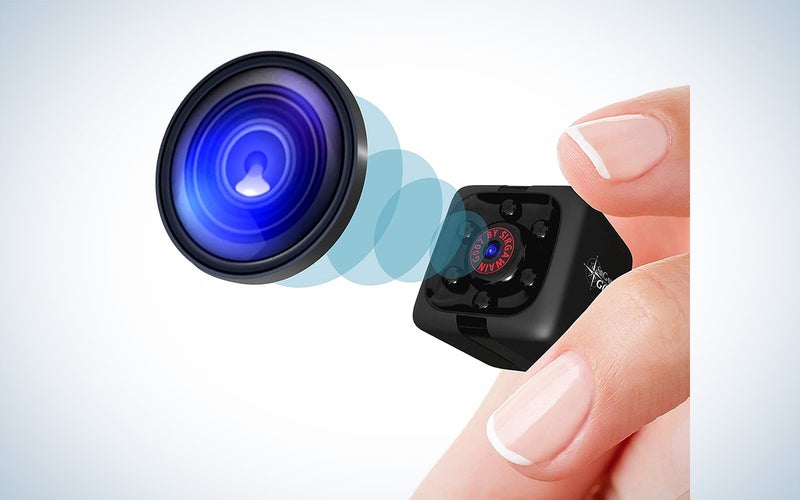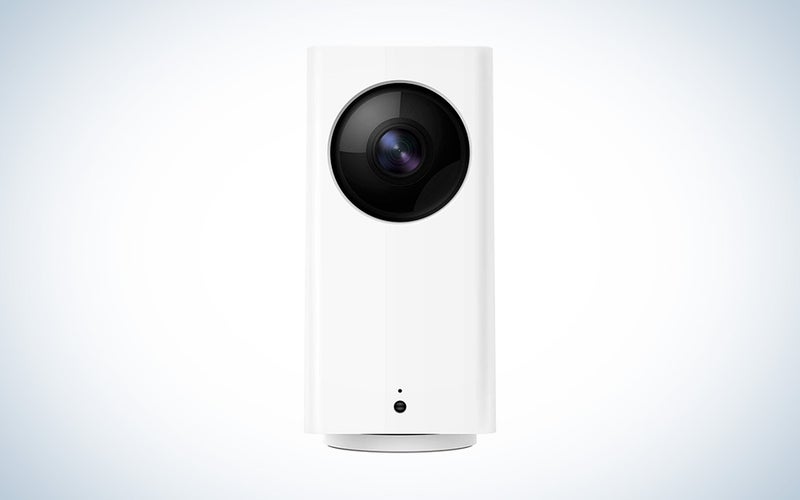
Online shopping is more popular than ever. But that also means your front steps have become the new frontier for theft. The best home security cameras can help you guard against such threats. Of course, they can also help you keep an eye on your baby, pet, or nanny, if you so desire. That’s why shopping for security cameras can be dizzying. Do you need indoor home security cameras that pan 360 degrees? Do you require outdoor home security cameras that are monitored by real people? Is a wireless home security camera really wireless? Don’t worry, we’ve done the research so you can find the best home security cameras to put your mind at ease.
- Best wireless home security cameras: Arlo Pro 4 Wireless Security Camera
- Best outdoor home security cameras: Ring Floodlight Cam
- Best indoor home security cameras: Eufy Indoor Cam 2K Pan and Tilt
- Best hidden home security cameras: Fredi Mini Hidden Camera
- Best cheap home security cameras: Wyze Cam Pan
How to shop for the best home security cameras
Knowing where you are going to place your home security cameras is the biggest factor in finding the right models, because location truly affects the features you need. Everything from the mounting and internet connection to the motion-activation sensitivity and the picture clarity is determined by where you are going to put your cameras and what kind of footage you hope to capture. Once you’ve pinned down your precise camera locales, consider the following in clear detail to help narrow down your shopping options:
Would you rather be wired or cut the cord?
One of the biggest differences between home security cameras is whether they are wireless or wired. The difference lies in how the cameras transmit the footage they capture. While wireless cameras are connected to a home’s WiFi and store footage on the cloud, wired cameras plug in directly to a coaxial or Ethernet cable, capturing video through a digital video recorder or a networked video recorder and storing footage on a hard drive. One note: Wireless cameras are not truly wire-free. Unless they run via a battery, they still have to be plugged into an outlet, while wired cameras typically get their power from their connected cable.
Many people favor wireless cameras because they are easier to set up—follow the device’s instructions to connect to the WiFi and then mount the cameras—and use cloud storage, which lets owners access the video content via a synced smartphone from anywhere. However, cloud storage typically comes with a monthly fee and recent news stories highlight wireless security camera’s susceptibility to hacking. Plus, a spotty wireless connection could pixelate (or completely interrupt) your feed.
Wired cameras tend to be more reliable and secure since their system stays local rather than involving the cloud. However, they often require expensive, professional setup, come with clunkier apps, and are not usually compatible with smart assistants.
Do you need to see inside or out?
Whether you want to keep an eye on the front door or the baby’s snore could very well determine the kind of home security camera you’ll need. Many cameras are perfectly suitable for inside and outside use, but a few considerations could sway your purchase. Primarily, consider the power. Remember, many wireless cameras have to be plugged in to work. Therefore, pay attention to battery life. Some wireless cameras come with batteries that can last for months on a single charge, eliminating the need to install an outside outlet or run lengthy extension cords outside your home. However, most battery-powered cameras rely on motion activation—recording only when they sense movement—since a 24/7 feed would be draining.
Mounting is another consideration to add when deciding between indoor and outdoor use. If your goal is to monitor your little one, you might be able to simply place your indoor home security camera on a side table beside the crib and call it good. Whereas, outside the home, you’ll definitely want something more secure. Some cameras offer magnetic mounts that make for easy installation—but they could also be all too easy to steal.
Lastly, if the camera is going to be outside, it needs to stand up to the elements. Anything with an IP65 rating can combat even sideways rain and thick pollen, but if you live in an especially wet or dusty climate, a higher rating couldn’t hurt. Also, most cameras can withstand below-zero and over-100 degree temperatures, but before you buy, make sure the model you select can meet the needs of where you live.
How’s the view?
Grainy, black-and-white security camera footage is no longer the norm. The best home security cameras shoot in clear, colorful high-definition that would practically be good enough for your next Superbowl party. Resolutions range from 1080p to 4K, and night vision is a common feature. Also, examine all the angles. Some cameras can pan all the way around and tilt 95 degrees, while others are limited to viewing angles of 140 degrees. The size and shape of the area you’re hoping to survey should dictate how much turning power you’ll need.
Does your property need extra security?
Some cameras are more than just an eye on your home—they can actually be a critical piece in an active home security system. If you’re looking for added assurance, look for a home security camera that’s connected to a system that enables live agents to monitor your home in real-time, trigger alerts, and even call the authorities when necessary. Such services will cost hundreds of dollars a year, but what’s the price of true peace of mind?
What level of notifications do you want?
Motion notifications can be hugely beneficial because they let you monitor activity without watching your camera’s livestream. However, at a certain point, motion notifications simply become annoying—and the second you stop caring about them is the second they become a lot less helpful. Some cameras have onboard artificial intelligence that deciphers between pets and humans, normal activities and threats, creating more customizable—and useful—notifications.
Are you hoping the security camera can help you stay connected?
Home security cameras can be a form of connection. For starters, some feature two-way audio, with microphones and speakers that let you talk to family members in other rooms.
Cameras can also come with apps that give multiple family members access to the same video feed—letting them share in the home surveillance responsibilities—while other cameras’ apps only enable one person to be in control. It’s also possible to connect to a smart device with some surveillance equipment. If compatible, you could ask Alexa or another smart assistant to pull up your camera feed on a synced smartphone or tablet, getting you that much closer to a truly smart home.
Related: Need more than a camera? Here are complete home security systems.
The best home security cameras
The best home security cameras are the ones best equipped to watch the location you want to monitor. Now that you’ve identified your most-needed features, here are our selections for the best security cameras for home.
Best wireless home security cameras: Arlo Pro 4 Wireless Security Camera
Amazon
Why it made the cut: This solid, all-around solution is simple to install and use.
Specs:
- Wired or wireless: Wireless
- Indoor or outdoor: Outdoor
- Resolution: 2,550 x 1,440
- Field of view: 160 degrees
Pros:
- Easy setup
- Excellent picture quality
- Monitoring zones
- Advanced notification options
Cons:
- Only comes with a magnetic mount, not a screw version
The 2K high-dynamic-range imaging—which offers a detailed picture of 2,550X1,440 maximum resolution, plus a spotlight, zoom feature, color night vision, and 160-degree viewing angle—means you can see all you need to with Arlo’s wireless home security cameras. They feature magnetic mounts, which make for relatively simple installation, however, that also means they can be easily taken—Arlo will replace stolen cameras for a year after you buy, or you can add hardware that screws the cameras into the wall.
Connecting directly to your WiFi, with no hub required, the wireless home security cameras allow you to monitor activity right from your smartphone. They are compatible with Apple HomeKit, Amazon Alexa, Google Assistant, and also come with a trial subscription to Arlo Smart, which offers various plans costing between $2.99 and $14.99 a month for cloud storage and live video streaming, among other benefits.
The cameras will buzz your phone whenever they detect motion, and you can trigger an alert on the cameras to scare off unwanted visitors. You can also opt for lower sensitivity settings in high-action areas so that squirrels don’t set them off—although Amazon reviewers report mixed returns on this feature.
In addition, the cameras have a microphone and two-way audio, a battery that is said to last six months (it recharges in no more than 3.5 hours), and the cameras can work in temperatures ranging from -4 degrees Fahrenheit to 113 degrees Fahrenheit.
Best outdoor home security cameras: Ring Floodlight Cam
Amazon
Why it made the cut: Built-in lights and an advanced camera keep close watch on your home.
Specs:
- Wired or wireless: Wired
- Indoor or outdoor: Outdoor
- Resolution: 1080p
- Field of view: 140 degrees
Pros:
- Advanced control through the app
- Two-way intercom
- Loud alarm
- Clear picture
- Motion sensor
Cons:
- Pricy
- Needs hard wiring
Ring’s outdoor camera comes with a pair of bright lights that illuminate its coverage area to see what’s happening. It covers a 140-degree view of your yard, all of which gets illuminated by the built-in bulbs. Ring has an advanced motion detection algorithm that determines the source of the disturbance before sending an alert to your phone. Ring has one of the most robust apps and camera management systems that ties directly into the Alexa smart home platform. You can talk and listen through the two-way communication system and it has an extremely loud alarm if you need to alert your neighbors. You’ll have to hard wire it into your house for it to work, but it’s worth the extra bit of effort.
Best indoor home security cameras: Eufy Indoor Cam 2K Pan and Tilt
Amazon
Why it made the cut: Because it can move, this camera can give a comprehensive view of your interior spaces.
Specs:
- Wired or wireless: Indoor
- Indoor or outdoor: Wired
- Resolution: 2K HD
- Field of view: 360 degrees (with rotation)
Pros:
- Rotating base goes 360 degrees around and 96 degrees up and down
- High resolution images
- Built-in speaker
Cons:
- Lackluster app options
Whether you need to watch your baby sleeping or need added security in your TV room, indoor home security cameras can be your extra sets of eyes and ears. The Eufy Indoor cam is exactly that, featuring 2K motion-activated video recording from a camera that can spin all the way around and tilt 96 degrees. The cameras also include two-way audio, and smart integration with your Amazon Alexa, Apple HomeKit, or Google Assistant, so you can use your voice to communicate with your son in the other room or with your smart device to instantly pull up the camera’s video feed on a synced tablet or phone. These indoor home security cameras also have onboard AI that detects whether that movement was a playful pet or a kid in need of attention. And at just over $50, the Eufy won’t severely dent your family’s budget.
Best hidden home security cameras: Fredi Mini Hidden Camera
Why it made the cut: It’s small enough not to be seen, but powerful enough for a solid picture.
Specs:
- Wired or wireless: Indoor
- Indoor or outdoor: Wired
- Resolution: 1080p
- Field of view: 140 degrees
Pros:
- Easy to conceal
- HD picture
- Wide field of view
Cons:
- Creeps can use it
Want to keep an eye on the nanny or the dog? Hidden home security cameras can be easily moved or concealed. The Fredi Mini Hidden Camera mounts with flexible straps—one Amazon reviewer attached it to his bike handles to use as a kind of GoPro—and it records in 1080p and captures 12-megapixel photos. The 4.5 cm by 4.5 cm by 2.5 cm motion-activated camera can record on a constant loop—even at night—and send footage to you via email. If you want to store old footage, you’ll need to purchase a microSD card (not included). No matter how you use these hidden home security cameras, you’ll need to plug it into the USB charger often—the battery only boasts an hour of run-time, although the camera is easily rechargeable with a USB cord.
Best cheap home security cameras: Wyze Cam Pan
Amazon
Why it made the cut: This affordable solution still offers tons of features/
Specs:
- Wired or wireless: Indoor
- Indoor or outdoor: Wired
- Resolution: 1080p
- Field of view: 360 degrees (rotating)
Pros:
- Rotates 360 degrees and tilts 93 degrees
- Affordable
- Solid image quality
Cons:
- Only 1080p resolution
- Limited customization
The best cheap home security cameras manage to pack in plenty of features and the Wyze Cam Pan doesn’t disappoint. It offers 1080p, 360-degree panning, 93 degrees of tilt, and infrared-enabled night vision at an affordable price. What’s more, it comes with free cloud storage to save two weeks’ worth of 12-second video clips, which are recorded whenever the camera detects movement. The WiFi camera is compatible with Amazon Alexa and Google Assistant and can notify you whenever it sees motion—meaning you don’t have to constantly monitor the live feed to check on your sleeping baby. (Of course, no one will judge you for wanting to watch the adorableness that is a sleeping baby.) The Wyze is also made for family bonding of all kinds thanks to two-way audio and a downloadable app that provides multiple family members access to the same live camera feed.
Related: Want a few more security cam options? Here are six.
FAQs
Was there a security camera that worked without WiFi?
Yes, there was a security camera that worked without WiFi. In fact, wired cameras still exist. They rely on cable internet connections and a network video recorder (or a digital video recorder) to capture footage that can be seen from a computer or synced smartphone.
Do home security cameras record all the time?
Some home security cameras record all the time. Wired cameras or wireless cameras that connect directly to a power source can record a 24/7 stream that an owner could watch at any time via a computer or smartphone app. However, many cameras are motion-activated, meaning they don’t start rolling until they sense movement. This saves on battery life and cloud (or microSD card) storage of the video files.
What happens if you unplug a security camera?
What happens if you unplug a security camera depends on whether it has a battery. If it does, it’ll continue to operate normally until that battery dies. If it doesn’t, it’ll stop recording. However, the past footage will still be available on the cloud or a hard drive, depending on the storage system you’ve set up.
The final word on shopping for the best home security cameras
Wireless home security cameras tend to be easy to set up and use, but they are less reliable and less secure than wired cameras. Outdoor and indoor cameras often share many of the same features, so mounting and battery life could make the difference. And when it comes to features, the best home security cameras give you plenty of options, from vivid high-definition pictures to night vision to two-way audio to smart-home assistant connectivity. Even cheap home security cameras can integrate with your home network and offer all kinds of alerts and access. Available for every situation, a home security camera that makes you safer could be one of the smartest purchases you ever make.
The post Best security cameras for 2022 appeared first on Popular Photography.
